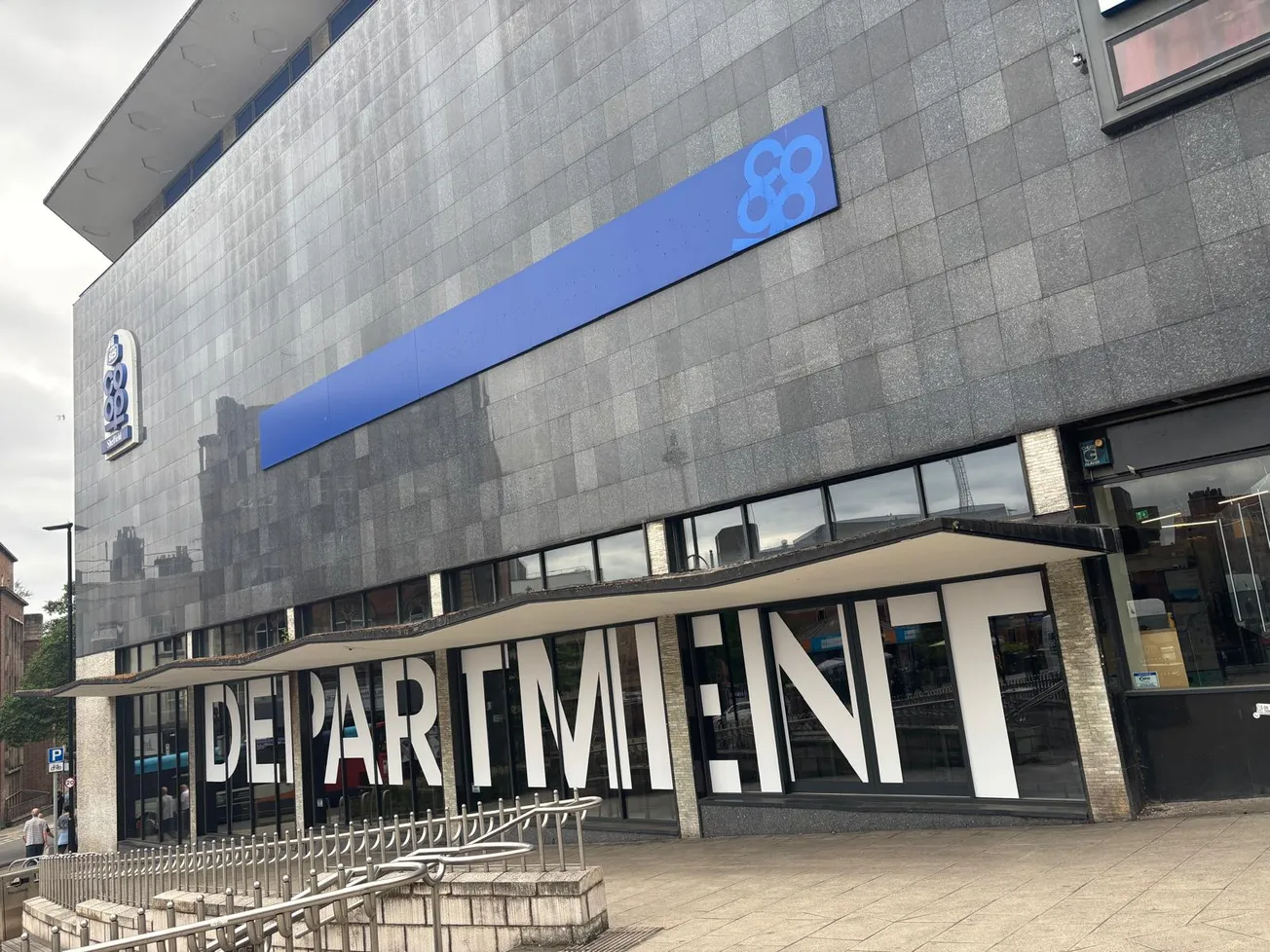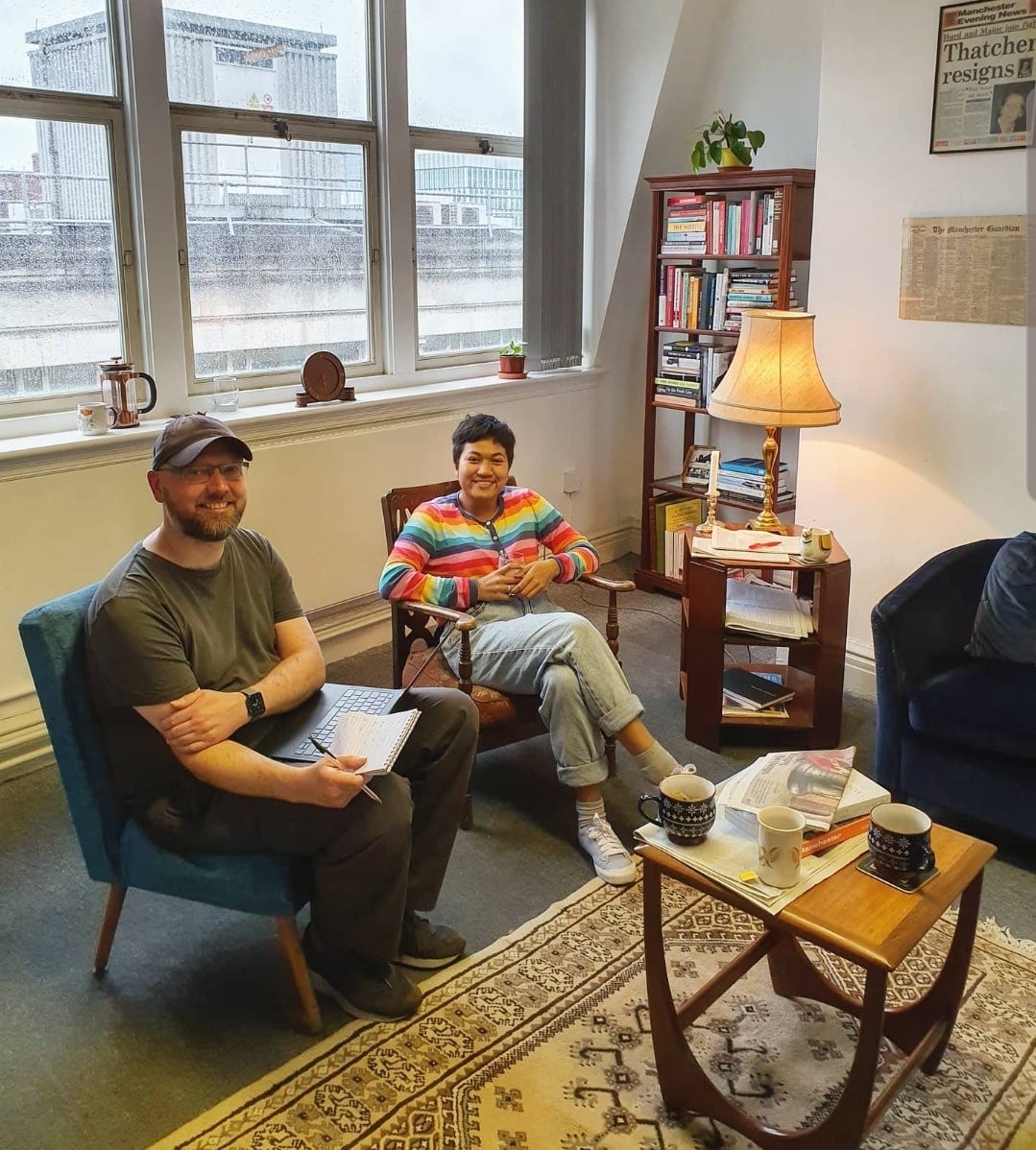Dear readers — last week I worked my last day as a news reporter at The Star to come and run the newsletter you are reading right now, The Tribune. Leaving a secure job at a newspaper that’s been publishing since 1887 to start an experimental new media venture might seem like a rash and foolhardy move. And maybe it is. But I wanted to use this weekend’s edition to explain why I’ve done it, and why I believe in this project.
I have been a journalist now for almost six years. I came to journalism relatively late in life, having studied politics at Leeds and — inexplicably, it now feels — worked for Lancashire County Council for more than a decade. While it’s clear that the profession is never going to make me rich, at its best it is one of the most enjoyable jobs in the world. I’ve always been the type of journalist who likes leaving the office and visiting the neighbourhoods we are covering. The incredible range of interesting people you meet means that no two days are ever the same.
I’ve worked on some amazing stories in that time: some of them funny, some of them sad. But the only pictures of me I can find in the archive are from when I went to a cat cafe in Grassmoor for the Derbyshire Times.
— Dan Hayes (@dhayes_news) 6:30 PM ∙ May 14, 2021
However, things have been changing in local journalism. You’ve probably sensed that from reading local newspapers and their websites. Newsrooms have been shrinking and closing. Dozens of local titles have shut in the past decade, and tens of thousands of reporters, editors, writers and critics have lost their jobs even on the papers which have survived.
Small teams of reporters are now stretched to the bone, covering so many stories that it’s very difficult to carve out enough time to do the things that most of you would recongnise as real journalism: visiting people in their homes; making calls to experts; requesting documents; looking through official reports; fact-checking before publication.
To get The Tribune’s journalism in your inbox for free, join our email list below
And it’s not just because people are buying fewer and fewer printed newspapers, although that is true. It’s mostly because the biggest funders of local journalism — the businesses who used to advertise their goods and services and jobs — have gone elsewhere. Local newspapers used to have a virtual monopoly on local advertising, and then the internet came along and took it all away. Car garages, estate agents, hairdressers and all the hundreds of advertisers who used to fund this whole enterprise can now advertise on highly targeted sites like Facebook or Google, or on specialist platforms like AutoTrader or Rightmove. People who want to sell things can sell them on eBay or Gumtree. People who are looking for jobs go on Indeed or LinkedIn.
With lucrative local advertisers almost entirely lost, local newspapers are left scrabbling for a tiny slice of the money spent by national and global advertisers, which means they are competing with every single other website on the internet for meagre amounts per click. And it really is meagre. You might earn £5 for every thousand clicks you get on an online story, meaning that many pieces of journalism about important topics in Sheffield bring in less than £50 in advertising.

Many newspapers have tried to square the circle by churning out loads and loads of stories based on press releases, television shows or tweets by celebrities. Gone is the expensive on-the-ground reporting, not to mention the desks of brilliant journalists on local newspapers who used to write features and cover theatre, music and books.
Newspapers now treat readers as a commodity to be ‘farmed’ for page views, tricked into clicking by clever headlines only to find wafer-thin stories that have been written in a matter of minutes. The stories that perform best online are usually not the most local ones — they are the ones that anyone in the country might come across on Google or Facebook. That’s why you saw local newspaper sites covering Harry and Meghan’s interview with Oprah Winfrey, for example.
Since I began in journalism, my work has increasingly been judged on how many page views I bring in, not the quality of the stories I write. This changes the type of reporting you do, neglecting important issues for more sensationalist fare. Just a few months ago, one of the main local newspaper groups was criticised on Twitter after running a series of identical reports across all its websites about a BBC Breakfast presenter’s ‘unusual’ food tastes. Needless to say, later the same day I was asked to write a story about the fact Louise Minchin puts marmalade on her sausage sandwiches.
If someone forwarded you this newsletter, please join The Tribune’s mailing list to get all our journalism in your inbox.
And picture articles — or ‘PAPs’ as they are called in the trade — are even more cynical. Originally intended as a way of showing off good photography, they are now used to squeeze more page views out of stories by making you click on muliple web pages rather than one. This keeps the bean counters happy but does nothing for readers. As a reporter, creating one is more akin to being on an assembly line than journalism in the way most people would understand it.
And it’s worth saying: None of this is the fault of the reporters who work at local newspapers. I know from my own experience how deflating it is to rush out stories that will “do well online” but don’t have anything to do with our core mission. The excitement I felt when I got my first job in journalism has slowly been replaced over time with sadness and the realisation that the career wasn’t what I hoped it would be. I fear for the trainees currently entering the industry, many of whom are recruited to work on “live” teams where the expectation is to write eight or ten or twelve stories each day.
That’s why I was so excited when I saw The Mill launching in Manchester last year, and why I became one of its first paying subscribers. The Mill publishes lovely long reads about local stories and people and is pioneering a totally new form of local journalism: funded by paying members and focusing on thoughtfulness, nuance and building up the trust of readers. They have shown that there is an appetite for high-quality local news that isn’t driven by clickbait, and over the Christmas holidays I started speaking to them about creating a similar newsletter in Sheffield, based on the same principles.

And here it is! As of this morning, there are 2,413 of you on the email list and dozens more join every day. It seems Sheffielders are welcoming this attempt to offer a different kind of reporting in the city, and that’s hugely gratifying. Soon we will launch properly, increasing our publishing schedule and open up paid memberships for those of you who want to receive all our journalism and support our growth. Some of our stories will always be published for free to our entire email list, so that we are serving the whole of the city and performing a public interest function. But we hope as many of you as possible will join as members when the time comes.
The Tribune is based on the idea of quality not quantity. Fewer stories, less noise. We will be pursuing a slower, more considered and thoughtful journalism that aims to inform and entertain readers without bombarding them. And it will be funded directly by readers, so we never have to cover our stories in annoying ads and so that we have an in-built incentive to reach for quality rather than for clicks.
When a breaking news event happens, some traditional media companies scrabble to produce as many stories as possible, to maximise the number of page views they can get. You have seen this during the pandemic: when the government announces a new rule change and some local newspaper websites produce 15 different stories — one covering tennis clubs, one covering pubs, one covering indoor soft play centres. The Tribune will take a different approach. If something is important we won’t worry about waiting a few hours or even a few days to produce something that puts it into context.
Good read... enjoying these stories from @sheffieldtrib - Park Hill flats and the making of modern Sheffield , by @sheffieldtrib
— Richard O'Brien (@RichardOBrien) 10:43 AM ∙ Apr 18, 2021
Why has there been a spate of shootings on Abbeydale Road or why are people who live in Sheffield’s eastern estates far more likely to catch and die from coronavirus? These are important issues that take time to research and write about. We won’t just describe what is happening we’ll explain why it’s happening too. Sheffield is jammed full of academics, experts and people with decades of experience to contribute to the public conversation. We will use them to provide genuine insight into the issues the city faces.
At first we will only have a tiny team: Me; our trainee Andrew Dowdeswell, who grew up in the city and will be pounding the pavements for us to find interesting stories; a handful of brilliant local freelancers; and some air support from the team of staffers and freelancers at The Mill, including journalists who have written for the Times, the Guardian, the Daily Telegraph and the New York Times. As we build up our paid membership, we will be able to grow our team.
We have lots of ideas for stories about politics, crime, culture, education, health and history — and we want the Tribune to be the natural home for coverage of environmental issues that befits one of the greenest cities in Europe. But we also want it to be up to you. We want to create a community where our readers can have a say in the editorial direction of The Tribune and contribute their expertise to our reporting. That’s why we ask you to email us and introduce yourselves when you sign up. You can still do that now, just email editor@sheffieldtribune.co.uk or hit reply to this newsletter.
I’m not a Sheffielder by birth — I grew up in Bolton. I first came here in 2014 to study journalism, and like many of you, I have adopted it as my cherished second home. It is a fascinating place, full of history and proud of its heritage for sure, but also a modern, vibrant city which has a great future ahead of it. The Tribune will cover both Sheffield’s glorious past and its exciting future, pointing out where it is falling short and spreading the good ideas that will make it better.
Thanks for joining up so early on. Please do tell your friends. And wish me luck. Together I’m sure we can make it work.
To get our journalism in your inbox, join our free mailing list now.
Get in touch: We would love to hear your ideas about where we should be focusing in our first few months. Just hit reply to this newsletter.
Call out: If you have worked in Sheffield journalism, please tell us about your memories and experiences for an upcoming piece we are preparing.
If someone forwarded you this newsletter, please join The Tribune’s mailing list to get all our journalism in your inbox.

Comments
How to comment:
If you are already a member,
click here to sign in
and leave a comment.
If you aren't a member,
sign up here
to be able to leave a comment.
To add your photo, click here to create a profile on Gravatar.







